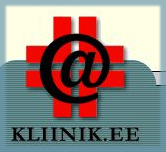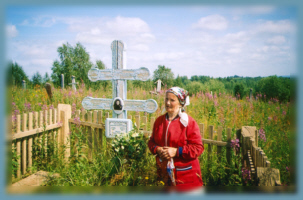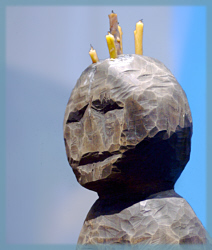Kaarina Rein
Key words: 17th-century disputations, history of medicine, medical education at the University of Tartu in the Swedish period, "Stregensis" by Andreas Arvid, studying at Academia Gustaviana Dorpatensis.
The present article deals with a medical disputation, written and defended at the University of Tartu during its first period of activity in the 17th century, when the university was called Academia Gustaviana. More precisely, under investigation is the disputation of the Swedish poetry theorist Andreas Arvidi (ca 1620–1673),
De natura et constitutione medicinae and its context. The medical education was at the insufficient level at most 17th-century universities in Europe and this was the case at the University of Tartu as well. There were very few students of medicine at the University of Tartu during the Academia Gustaviana period (eight, all in all) compared to the whole number of students (1056) during that time. Only two of these eight students were afterwards active as physicians. There were but few medical disputations defended during the Academia Gustaviana period, of which two were solely medical, supervised by the professor of medicine Sebastian Wirdig. The first of these, the disputation by Andreas Arvidi, deals with medicine in general. Andreas Arvidi was not a medical student but studied natural sciences at the University of Tartu. As a person of great talent, he debated on a variety of themes, including astronomy, mathematics, botany, medicine and ethics. His disputation
De natura et constitutione medicinae is explaining the meaning of the word ‘medicine’ by exposing its etymology and providing synonyms and homonyms to this word. In defining medicine he quotes Jean Fernel, the famous French Renaissance physician. Then he discusses the reasons and purposes for inventing medicine and finally presents the systematisation of medicine. The whole work reveals the author’s brilliant knowledge of Greek and Roman authors, as well as of contemporary medical authorities. Of the latter ones, iatrochemist Daniel Sennert, professor at Wittenberg University, has been quoted on several occasions, which implies to the fact that Sennert was an authority in the 17th-century Faculty of Medicine in Tartu. Andreas Arvidi’s disputation
De natura et constitutione medicinae is a work that gives the broadest overview of medical thought at the University of Tartu in the 17th century.

Mare Kõiva
Key words: communication, computer-mediated communication, disease narrative, doctor-patient communication, online medicine, patient narrative
The adaptation of information technology to everyday clinical practices coincided with the emergence of online databases, personal medical history and institutional information websites. One of the central issues in online medicine is source credibility. This paper overviews the types and communication of online medical information that have changed the logistics of doctor-patient communication. Inter-doctor communication also benefits from the possibilities for professional communication, and application of multiprofessional knowledge; it helps shape and unify professional terms and nomenclature, guarantees the confidentiality and security of data, while providing easy management of high-quality data; makes provisions for knowledge management and ambulatory e-services.
The paper overviews the information portal Kliinik.ee (www.kliinik.ee, OÜ Tervisenõuanne) which shares medical information made available by medical professionals for non-medics, mostly for patients. The portal offers a range of e-medicine services, such as responses by specialists, psychologists, pharmacists. The Communication groups offer the patients free medical advice, feedback, a second opinion to their treatment scheme, as well as an opportunity to share knowledge and their personal experiences, and receive emotional support.
Writing therapy is becoming increasingly popular and has spontaneously moved online. Today, there are discussion forums available for people suffering from diabetes, cancer and other serious (or incurable) medical problems. The Internet is in many respects advantageous for this type of therapy: it provides an opportunity to establish a dialogue with others with a similar condition while protecting one’s privacy and anonymity. Medical professionals post comments under their own names which gives them credibility.
Seeking medical help at an institutional site from practising doctors makes the language use and attitudes of the online forum official, polite and serious. A closer look at the construction and vocabulary of the doctor-patient communication act reveals that the most common features are formality and distancing – the partners are not equal in their sociopolitical standing. Inter-patient discussion groups are more varied in their style of communication and language use, ranging from informational notices to narratives and displays of emotion. A discussion concerning a visit to a folk healer is treated at more length. Interaction of this kind is a discussion that preserves the individual characteristics of many people in writing. Opinions are individualised, making the discussion similar to oral dialogue in which different strategies are used in reasoning. The posted messages reflect natural personal language use in forms ranging from informational notices to lengthy narratives. The general attitude is supportive and trusting towards official medicine and the personal reactions to social and situational events.
A medical discussion board comprises a conditional group that does not form a network or community but engages in a dialogue to obtain and provide expert opinion. Users of patients’ discussion group and their narratives have a close connection to reality. The Internet offers the users new ways to share their practices and experiences and sometimes supports or even provides alternatives not available in offline reality. Such groups are based on information sharing and narratives and play an important role in maintaining emotional stability.
Raivo Kalle
Key words: archive texts, Estonian folk medicine, ethnobotany, database Herba, Gustav Vilbaste, linking of folk plant names with the botanical nomenclature, folk plant names, phytonyms
Herba, the Estonian folk medicine database of herbal treatment (available at http://www.folklore.ee/herba), has been the source of lore texts about the use of plants and herbs as popular remedies since 2006. At the present moment, the database includes the earliest archive texts up to the year 1939, estimated to constitute slightly less than half of the total number of texts. The identification of plant names in the texts are largely based on the monograph
Eesti taimenimetused (‘Estonian Plant Names’) by Gustav Vilbaste (1993). Even though most of the collected Estonian plant names have been identified by Vilbaste, new ethnobotanical names emerge while processing the lore material. The article describes the linking of new folk plant names with the botanical nomenclature and establishing connections with the already known folk plant names (on the basis of texts in the database and specialised literature). The database text can be associated with the species on the basis of three criteria: folk plant name (according to Vilbaste’s monograph), the Latin name included in the text, and the plant description. The number of informants with more than one Latin extension in the database is currently 11. Some texts may correspond to nearly all the criteria, but this is an exception rather than a rule. The largest number of Latin names has been contributed by the following informants: pharmacist Hans Jako (in Jakob Hurt files), physician Mihkel Ostrov in 1891 and 1892 (folklore files of the Society of Estonian Literati), school teacher Julius Lunts in 1937 (Estonian Folklore Archives collection) and medical student Jaan Lääts in 1938 (Estonian Folklore Archives collection). Gustav Vilbaste has likewise used the texts of the said informants, though selectively; for instance, the text contributed by Mihkel Ostrov yielded more than 15 new equivalents. The most time-consuming section of the work was to establish connections according to other plant names and/or description and habitat represented in the texts. Usually, a plant can not be identified on the basis of a single text and the results are unreliable. For identification, texts from different collections were gathered together and were analysed according to different parameters, such as the origin of the text, informant’s background, other names mentioned in the text and so on; in addition, the results were compared against the data of plant geography. As to the more complicated texts, mycologists and botanists had to be consulted with. One of the aims of the article is to publish the plant names rediscovered in the course of the work and provide inspiration for deriving new Estonian names for species so far unnamed (e.g., family Gymnosporangium).

Irina Ilyina
Key words: cultural adaptation, folk healers, folk medicine, indigenous peoples of Northern Europe, Komi
The article based on field work materials discusses the characteristics of folk medicine among the northernmost group of the Komi – namely, those living in the Izhemsky District (Komi iz’va). During the populating of the tundra and the development of reindeer herding tradition borrowed from the Nenets, the Izhma Komi developed a striking cultural and practical character which is expressed in the structure of medical knowledge, the range of remedies and treatment methods, and the system of nutrition and hygienic tradition. The folk medicine of the said ethnic group is characterised by remarkable rationality, which is expressed in a rare use of magical treatment methods, the majority of folk healers are bone-setters, and a sceptical attitude towards the Nenets Shamans is prevailing.
In the framework of ancestral worship practised by the Komi developed the cult of Tandze Marya, a famous folk healer and bone-setter. The mythologisation of the well-known healer has been greatly facilitated by the means of mass media, which has, in some respects, appeared on the initiative of local intellectuals
Birgitte Rørbye
Key words: health care, ethnomedicine, conception of disease, illness behaviour, tale of disease, patient, folk healers, folk tales, health myth
Research in ethnomedicine involves the observance of the views, principles, and behaviour regarding illnesses and diseases by different people and cultures. The activities of folk healers and turning to them for help are still topical, even though the awareness of people has grown and the level of education is considerably higher than in the past. Nevertheless, it appears that regardless of the availability of medical care, there are always patients who turn only to folk healers. Another group of people who tend to turn to folk healers for help are those whose treatment by medical professionals has not been successful. In folklore the theme is represented by tales of diseases and illnesses, in which the main characters are a positive or negative patient and a positive or negative healer. These often stereotypical folktales are almost the only material that enables drawing conclusions on the illness behaviour of the customers of folk healers. The reason behind all that is that the society is steadfastly fixated on the health myth.
Source: Rørbye, Birgitte 1982. Ethnomedicine. Ethnologia Scandinavica: A Journal for Nordic Ethnology, vol. 12. Lund: Folklivsarkivet, pp. 53–85.

Piret Õunapuu
The article does not aspire to be an academic overview of museological issues but is rather a contemplation based on previous experiences. In museum work, the popular truth that everything complicated will be eventually sorted out does not seem to apply. The more you are involved in the work, the clearer it becomes that there are no simple truths.
In reality, the main activities tend to stand in conflict and thus emerges the question of the essential nature of museum, which may at first seem existentialistic – is it a silent treasure chamber or living cultural heritage? The treasure chamber justifies itself if, and only if, it also functions as the living cultural heritage. An archival item has significance only within the general cultural context. The prerequisite of a cultural heritage is a message. Is a reproduction a cultural heritage? No, it is rather a tool for passing on the message, while the message itself is authentic. The solution should be the increasingly careful selection of items in museum collections, and their message must be as dignified both now and a hundred years later. At the same time, larger and more versatile auxiliary collections which are used in reconstructing the cultural heritage have to be formed, brought to life and thus made understandable by all. The activity of museum workers is decisive in what people of the future will know about the past. The decision is made on two planes: by compiling the collections and displaying these.
News, overviews
On August 28, 2007 Anu Korb defended her PhD thesis on Estonian communities in Siberia as a source for folkloristic research (Siberi eesti kogukonnad folkloristliku uurimisallikana. Dissertationes folkloristicae universitatis Tartuensis, 8. Tartu Ülikooli Kirjastus) in the Senate Hall of the University of Tartu. Overview of the thesis defence by Aivar Jürgenson is available in English in volume 37 of Folklore: Electronic Journal of Folklore (http://www.folklore.ee/folklore/vol37/news.pdf).
(28 June 1951 Qormi –19 Dec 2007 Sliema)
On 19 December 2007, the leading Maltese folklorist Georges Mifsud Chircop died. Mare Kõiva takes a retrospective look at his life and academic career. The English version is available in vol. 38 of Folklore: Electronic Journal of Folklore (http://www.folklore.ee/folklore/vol38/inmemoriam.pdf).
Piret Voolaid and Taive Särg discuss the winter conference of Estonian folklorists which was held on January 24 –25, 2008 in Kopra tourist farm. This year’s conference was dedicated to the memory of ethnomusicologist Anu Vissel (16 Dec 1952 – 6 Sept 2005), who would have turned 55 on the 16 December 2007. The topics discussed at the conference were chosen according to Anu Vissel’s research interests, so the focus was on contemporary children’s and youth lore and dance and music tradition.
Ave Tupits reviews the festive Academic Folklore Society lecture meeting held on February 28, 2008 in honour of the centenary of Estonian folklorist Rudolf Põldmäe.
Astrid Tuisk introduces the ceremonial event where Toomas Hendrik Ilves, President of the Republic of Estonia, presented the Folklore Prizes to the most prolific folklore collectors in the past year. Musical entertainment was provided by folk group “Munuksed” from Tallinn. The laureates of this year’s Folklore Prizes were Anna Rinne, school teacher from Võru, Maret Lehto from Muhu Island and Jaan Malin from Tartu.
Overview of the 11th working meeting “Kulturwissenschaftliche Perspektiven auf Körper- und Gesundheitskonzepte” of the work group Gesundheit und Kultur in der Volkskundlichen Forschung by Ave Tupits. The event was held on 2–4 April 2008 in Germany.
Живи човешки съкровища – България: Living Human Treasures Bulgaria. Sofia: Academic Publishing House “Marin Drinov” 2004.
The UNESCO project of the Bulgarian Institute of Folklore has resulted in a bulky bilingual (front cover in Bulgarian, back cover in English) decorative publication. All articles and indexes are in both languages and the publication features colour photographs. Authors of the book are ethnomusicologists and researchers at the Bulgarian Folklore Institute. The book’s introduction is written by the project leader Mila Santeva. The book provides overviews of folklore genres (Albena Georgieva-Angelova, Anna Cherbanova, Mila Santova, Miglena Ivanova, Vanya Mateeva), folk instruments and music (Dimitrina Kaufman, Lozanka Peicheva), religious tradition and central holidays (Ekaterina Anastasova), everyday life and also folk medicine (Vanya Mateeva). Illustrative tables facilitate following the distribution of folkloric phenomena in Bulgaria. Review by Rahel-Laura Vesik.
Kaija Heikkinen. Metsänpelko ja tietäjänaiset. Vepsäläisnaisten uskonto Venäjällä (Fear of forests and wise women. The beliefs of Vepsian women in Russia). 2006. Suomalaisen Kirjallisuuden Seura: Helsinki, 276 pp.
Ирина Юрьевна Винокурова. Животные в традиционном мировоззрении вепсов (Irina Iu. Vinokurova. Animals in the Traditional Vepsian Worldview). 2006. Petrozavodsk: Izd-tvo PetrGu, 448 pp. + illustr. and tables
Review of the books on Vepsian tradition by Kristi Salve is available in English in volume 37 of Folklore: Electronic Journal of Folklore (http://www.folklore.ee/folklore/vol37/books.pdf).
Tarmo Kulmar. Tõsilood muinasrahvastest. (‘True Stories about Ancient Peoples’) Eesti Mõttelugu 76, Ilmamaa, Tartu, 2007, 348 pp. (Editors Simo Runnel and Urmas Tõnisson; foreword by Märt Läänemets).
Peeter Espak reviews the book Tõsilood muinasrahvastest by Tarmo Kulmar, professor of comparative theology at the University of Tartu. The book is a collection of academic articles on the beliefs and history of ancient peoples. During his long scientific career, Tarmo Kulmar has mainly dealt with the history and religion of the Inca people in Peru and Aztecs in Mexican area as one of his main subjects. The book is divided into six different sub-topics: “Holy Text”, “Holy Creature”, “Holy Place”, “Holy Event”, “Holy History”, and “Holy State”. The use of the term “holy” refers to the fact that in his research Kulmar has taken the viewpoint of a theologian – and not that of an anthropologist or historian.
The English version of the book review is available in vol. 38 of Folklore: Electronic Journal of Folklore (http://www.folklore.ee/folklore/vol38/books.pdf).